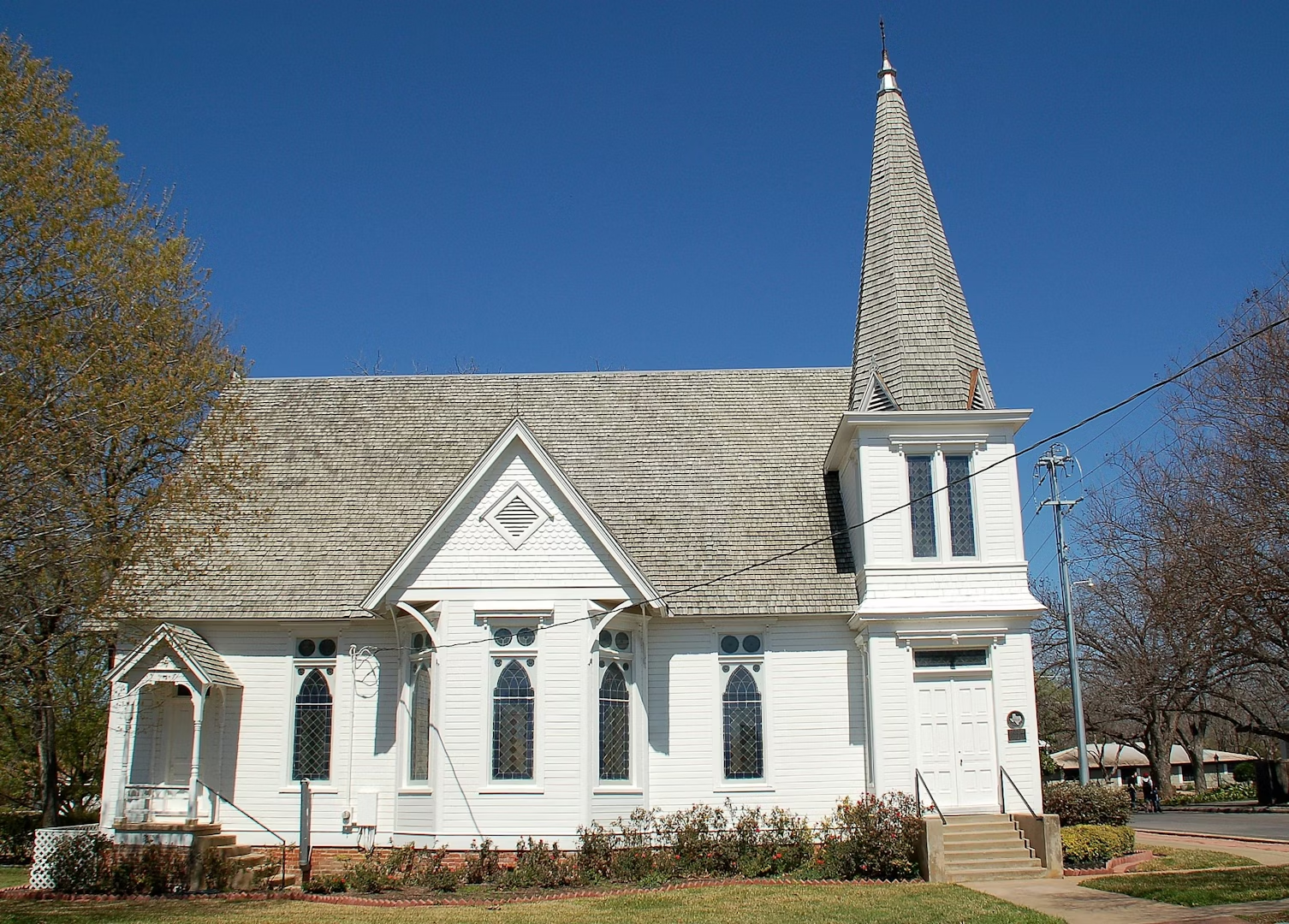Historic Churches and Cemeteries of Bastrop County: A Journey for Visitors & Writers
- T. J. Finn, M.Ed.
- Jun 29
- 3 min read
Explore the spiritual and ancestral history of the region

Bastrop County's rich historical tapestry is woven through its venerable churches and haunting cemeteries. From Gothic Revival steeples in downtown Bastrop to silent family graveyards amid rural prairie, these sacred spaces offer a profound connection to the county's past. Join me on a journey through time—one consecrated ground at a time.
⛪ Bastrop's Beloved Steeples
Bastrop Christian Church (1106 Church Street)
Founded: 1857, with its first building in 1867.
Current building: A Victorian Gothic Revival wooden church, built 1895, featuring a corner steeple, tall stained-glass windows, and a bell salvaged from the 1867 "rock church" and originally used on a steamboat (downtowntx.org, sah-archipedia.org).
Preservation status: A Recorded Texas Historic Landmark undergoing vital restoration, including $54 000 spent on a new roof and ongoing efforts to repair stained glass and woodwork (cbsaustin.com).
Other Historic Congregations
Bastrop was home to one of Texas’s earliest Methodist churches (1835), the First Baptist (1850), Lutheran (1856), Episcopal (Calvary, 1869 / building from 1883), and Catholic (Ascension, founded 1864; current building from 1907) (explorebastropcounty.com).
🪦 Cemeteries: Silent Storytellers of Bastrop County
Fairview Cemetery (est. 1832, Bastrop)
Overview: Bastrop's largest, spanning 36 acres with ~3,500 graves. It's among the state's earliest and hosts veterans from the War of 1812 to Vietnam. A Historic Texas Cemetery with multiple historical markers (en.wikipedia.org).
Notable interments:
Governor Joseph D. Sayers (1841–1929)
Congressman & Lt. Gov. George W. Jones
African American state legislator Robert A. Kerr
Texas Rangers and numerous Confederate soldiers (en.wikipedia.org, backroadwhispers.blogspot.com, explorebastropcounty.com)
Traditions & tours: Annual historic walking tours with live reenactors & Wreaths Across America in December (en.wikipedia.org).
Rural Community Cemeteries
Scattered across the county, these resting grounds tell intimate tales:
Grassyville Cemetery (near Paige): German Methodist town (settled 1850s); the 1.5-acre cemetery holds about 130 graves, many inscribed in German, including Civil War veterans (en.wikipedia.org, en.wikipedia.org).
Phelan Cemetery (north of Bastrop): Remnant from an early 1900s coal-mining town, featuring tombs with Spanish epitaphs that reflect the Mexican labor community (en.wikipedia.org).
Claiborne Cemetery (Crafts Prairie): A family plot dating back to the 1850s; also the resting place of enslaved people, with descendants maintaining it through reunion traditions (billiongraves.com).
Saint Mary’s Colony Baptist Cemetery (near Cedar Creek): Founded by formerly enslaved families post-Emancipation, reflecting deep African American farming roots (findagrave.com).
Kovar’s Sts. Peter & Paul Catholic Cemetery: In the Czech-Moravian community of Kovar, tied to a 1894 chapel, immortalized in film Hope Floats (en.wikipedia.org).
🌿 Heritage, Preservation & Community Engagement
Cemetery preservation workshops: Recent Texas Historical Commission events focused on restoring endangered rural cemeteries, highlighting headstone care, archival research, community stewardship, and legal protections (beaumontenterprise.com).
Local caretaking: Nonprofits and descendants—like the Grassyville Cemetery Association (since 1963) and Claiborne Cemetery Association—actively maintain these sites (en.wikipedia.org).
Tours & education: The Bastrop County Historical Society and museum offer exhibits and guided tours. Fairview Cemetery hosts annual historical programs with reenactors, celebrating even lesser-known figures buried there (bastropcountyhistoricalsociety.com).
🗺️ Self-Guided Heritage Trail
Begin at Bastrop Christian Church – Admire Victorian Gothic architecture and learn about its steamboat bell. Check restoration progress or donate.
Walk through Fairview Cemetery – Identify graves of politicians, pioneers, and Texas Rangers. Pause at War Babies Memorial, and consider attending a December wreath-laying.
Explore rural routes – Visit Grassyville or Phelan cemeteries to connect with immigrant and laborer histories.
Stop in Kovar – See the 1894 Czech chapel and visit its cemetery to honor immigrant heritage.
Engage with caretakers – Join a cemetery cleanup, photo-documentation days, or support historical society efforts in events.
💡 Why These Places Matter
Spiritual continuity: Churches reflect the faith traditions that shaped community cohesion and identity from early settlers.
Ancestral narratives: Cemeteries memorialize diverse lives—Texas soldiers, Black farming pioneers, immigrant families, forgotten ministers—revealing personal facets of Bastrop's past.
Cultural stewardship: Preservation efforts bring communities together, ensuring that the county’s historical voices—documented or unmarked—are not lost.
📝 For History Writers & Visitors
Use archival markers (Texas Historic Sites Atlas, Historical Commission) to enrich storytelling.
Interview descendants or caretakers for oral histories—especially in small, family-managed cemeteries.
Pair visuals—like Victorian church steeples and aged headstones—with mapped itineraries for compelling blog narratives.
Encourage readers to connect—by visiting, donating, or volunteering for preservation events.
Bastrop County's historic churches and burial grounds are living classrooms. They offer architecture, genealogy, cultural continuity, and communal memory. When travelers step into these spaces—through pews, pathways, or weathered stones—they are invited to reflect on the spiritual and ancestral echoes that anchor this corner of Texas.













Comments